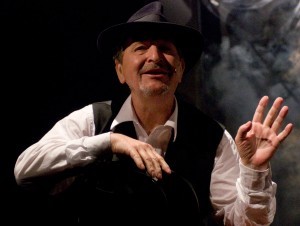
This project promotes open access materials and has been funded with support from the European Commission - Erasmus+ program. These materials reflect the views only of the author, and the Commission cannot be held responsible for any use which may be made of the information contained therein.
[Project Number: 2016-1-HR01-KA201-022159]
![]()
Book title
Federigo’s Falcon
Author
Giovanni Boccaccio

Bibliographic information
https://americanliterature.com
Links (adaptations, reviews, full texts etc.)
https://americanliterature.com/author/giovanni-boccaccio/short-story/federigos-falcon
https://www.youtube.com/watch?v=XbolSEfS35w
Theme
Love and sacrifice, values in life
Short summary
Federigo loved a lady who got married to another man and had a son with him. Federigo used to be rich but he has lost his wealth during the time. The only thing he treasures is his falcon. One day, the lady's son gets ill and claims the only thing that could save him is the falcon. The lady visits Federigo to ask him for the favour. Federigo wants to host her with the best he has and he prepares the falcon for dinner.
Why is the story appropriate for the targeted groups of RSP readers?
It reflects social themes, social diversities
What are the distinguished readers interests reflected by this book/story?
-
Why is this story motivational for the pupils?
It deals with love, property, life values and what one is able to sacrifice to reach something - issues that are relevant for every generation.
Is there a historical, political, multi/inter cultural, migrant or similar context recognized in this book/story?
Asking people for help and helping them. The matter of losing one's luxury for the purpose of helping the others.
Is there a principle of inclusion reflected in this book/story and does it promotes understanding of cultural diversities and heritage?
Emphasize love and family relationships.
Title of Activity
Departures
Description of educational activity
Duration: 180 minutes
Pupils’ age: 15-19
Organization of the class of pupils: individual/group work
The aim of the lesson: The aim of the lesson is to improve the reading literacy of the students. The students learn about some important historical movements of the 20th and 21st century. The students are able to formulate and express their opinions.
Support materials: The text of the story.
Activities:
- Groups of 4. Every group is a family, however, one of them has to leave now – the one who is different. Students have to decide within their groups who is different and who is going to leave the family. Nobody wants to leave; the leaving one is a loser. After one of them leaves, we talk about the reasons why they have left. The activity is repeated again until there are just two people left in every group – the winners. This way we also form new groups.
- Home – create a definition. What makes home? Illustrate your definition creating a living picture. Discussions over the living pictures.
- Discussion: Leaving home. What possible reasons could someone have to get to leave their home?
- Imagine you move to a new place. What would be your first steps to be done to feel there home?
- Small groups. Comparing the answers, discussion.
- A member of each group is packing their stuff for different reason (10-day summer holiday by the sea; 5-day business trip; going to prison for 3 years; moving away from their parents; leaving home forever). Every group makes a list of things they would pack for them and they prepare a living picture from the moment of saying good-bye. After that they show the pictures and read the list to the others – they guess where they are going.
- The students read the story. How many characters appear in the story? Do they have anything in common? What? Why are they packing?
- Every group describes one of the characters. Discussion, introducing the characters.
- Every group writes three entries from the person’s diary – a week before the day, on the day, a week after the day. They illustrate each diary entry with a living picture. Reading, discussion.
- Which country would you choose if you had to emigrate? Why?
- What would you miss most from your country? What would you miss least? Why?
Evaluation and assessment method:
- Throughout the lesson, ensure that your students are backing up their choices with accurate supporting details.
- Teacher's observations of students’ participation in group activities and discussions.
Effect of the activity on RSP reading:
Practices that support students´ choice, collaboration, and shared control of learning outcomes can be linked to self-expressed interest in reading and engaged reading behaviour.
Connection to curriculum
Grade: 1 – 4 grade of secondary studies
Curriculum: The study of literature is focused on reading and comprehending literary texts of historical and cultural importance and relevancy either in the world or Czech literature. Students are taught to work with texts and information in different ways, to adopt the processes of analysis, synthesis, induction, deduction, generalization, abstraction, specification, comparison, organization, selection. The students should be able to interpret, summarize and evaluate the texts.
Knowledge:
- Understand the stages of development of a hero
- Learn about history
- Improve reading comprehension
- Organise information in a specific way
Skills:
- Make predictions, deductions
- Compare and contrast
- Summarize
- Work effectively in groups, respecting others
Competences:
- Think in historical context about life or personal experience of different people
- Be able to visualise material read
- Follow specific instructions and conventions
- Evaluate evidence
- Support and justify an opinion
Bibliographic reference to be used during the activity
Pech Hynek
Publisher: not published
ISBN:
Page count:
Year of issue:
Results
The expected outcomes of the lesson are:
- The students will be able to understand different life situations in historical and social context.
- To connect ideas and themes across texts.
- To offer observations, make connections, speculate, interpret, and raise questions in response to the story.
Recommendations
Both the teaching method and the text can help in increasing students’ interest in reading. This text promotes different characters described in different historical moments. The teacher monitors the students so as to make sure they cooperate effectively.
Book title
Departures
Author
Pech Hynek

Bibliographic information
Not published
Links (adaptations, reviews, full texts etc.)
-
Theme
Migration
Short summary
During the time, different people are forced to leave their homes escaping from wars.
Why is the story appropriate for the targeted groups of RSP readers?
It reflects political, historical and social themes, refers to current migrant situation
What are the distinguished readers interests reflected by this book/story?
-
Why is this story motivational for the pupils?
A modern story - easy to read more difficult to understand. The readers might find it attractive as the real plot is hidden between the lines.
Is there a historical, political, multi/inter cultural, migrant or similar context recognized in this book/story?
Clear historical and migrant context.
Is there a principle of inclusion reflected in this book/story and does it promotes understanding of cultural diversities and heritage?
Finding new home.
Book title
The snack thief
Author
Andrea Camilleri

Bibliographic information
Andrea Camilleri- Il ladro di merendine- Edizioni Sellerio 1996
Links (adaptations, reviews, full texts etc.)
https://www.behance.net/gallery/44431689/PDF-DOWNLOAD-Andrea-Camilleri-Il-ladro-di-merendine
http://www.qlibri.it/narrativa-italiana/gialli,-thriller,-horror/il-ladro-di-merendine/
Theme
Immigration
Short summary
Montalbano finds his sympathies aroused when he takes custody of the novel's title character, an abandoned boy named François, who has managed to survive by stealing the snacks of other children on their way to school. These sympathies, however, start to give way to jealousy as François wins the affection of Montalbano's lover, and the insular closeness of woman and boy threatens to leave the inspector the odd man out.
At the same time, Montalbano is working overtime to determine the connection between a pair of nearly simultaneous but seemingly unrelated homicides. On the same morning that a Tunisian patrol boat reportedly opens fire on a Sicilian fishing trawler, killing one of the crew, Mr. Aurelio Lapècora, an aging businessman, is found stabbed to death in the elevator of his apartment building. At the apparent center of all the intrigue is a young Muslim woman named Karima. The cleaning woman at Lapècora's office, Karima is in the practice of performing "extras" for her male clientele. She is also both the mother of the little snack thief and, amazingly, the sister of the dead fisherman. But the center proves to be the empty space in the design, for Karima is nowhere to be found.
Why is the story appropriate for the targeted groups of RSP readers?
The story is captivating; it is written in a cinematographic style and there are many dialogues. Besides, the syntax is simple and the lexical expressions are clear. Comic parts are present too.
What are the distinguished readers interests reflected by this book/story?
The protagonist is a child and this can help the identification of the reader.
Why is this story motivational for the pupils?
Because it helps to understand the phenomenon of immigration and to better understand those who are different.
Is there a historical, political, multi/inter cultural, migrant or similar context recognized in this book/story?
Because it helps to understand the phenomenon of immigration and to better understand those who are different.
Is there a principle of inclusion reflected in this book/story and does it promotes understanding of cultural diversities and heritage?
Yes, because the child is welcomed at the commissar's house first and then at his acquaintance’s place, and he perfectly becomes integrated in the social and cultural context.
Contact
X gimnazija ''Ivan Supek''
Ul. Vjekoslava Klaića 7
10000
Zagreb
E-mail: partners@handbook4rspreaders.org










